The IS4350 is a chip that integrates a Modbus TCP/IP Slave stack. It features an internal memory of 500 Holding Registers, accessible by both a microcontroller (via I2C) and a Modbus Master device (e.g., PLC, computer, etc.).
The goal of the IS4350 is to eliminate the engineering effort typically required to implement and validate Modbus TCP/IP communication. It offers a reliable, ready-to-use solution that helps reduce development time and speed up your time-to-market (TTM).
How it Works?
The chip provides two interfaces:
- An I2C interface for your microcontroller, FPGA, Arduino, Raspberry Pi, etc. ➜ This is where your system reads/writes Modbus data.
- A RMII to connect your preferred Ethnernet PHY transceiver. ➜ This is the fieldbus that connects to a PLC, computer, or machine.
The internal memory is composed of 504 registers: – 500 Holding Registers for user data. – 4 Configuration Registers for communication settings.
You can use the IS4350 in two main modes:
- As a Sensor → your microcontroller writes data to the chip via I2C.
- As an Actuator → your microcontroller reads data from the chip via I2C.
- As an Advanced Device → your microcontroller reads and writes data to and from the chip via I2C.
➡️ Just read/write the registers you need — no protocol stack required.
Default Chip Settings
Default Modbus Settings:
- Modbus Slave ID:
1
- IP: DHCP
Default I2C Settings:
- I2C Slave Address:
0x11 (fixed)
- I2C Speed:
100 kHz, 400 kHz, 1 MHz
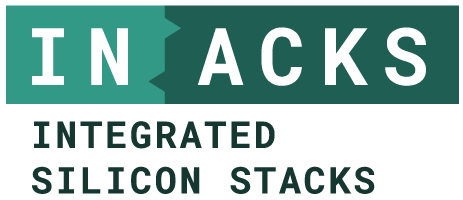
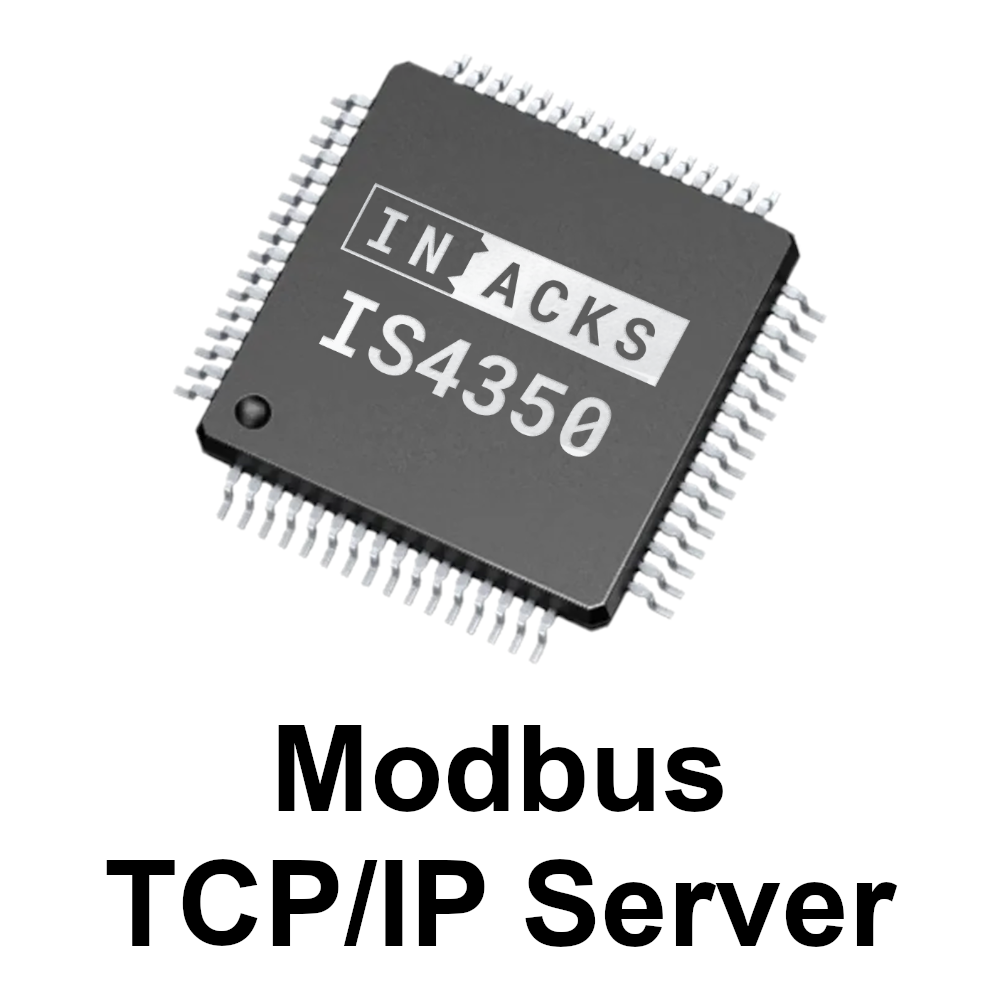
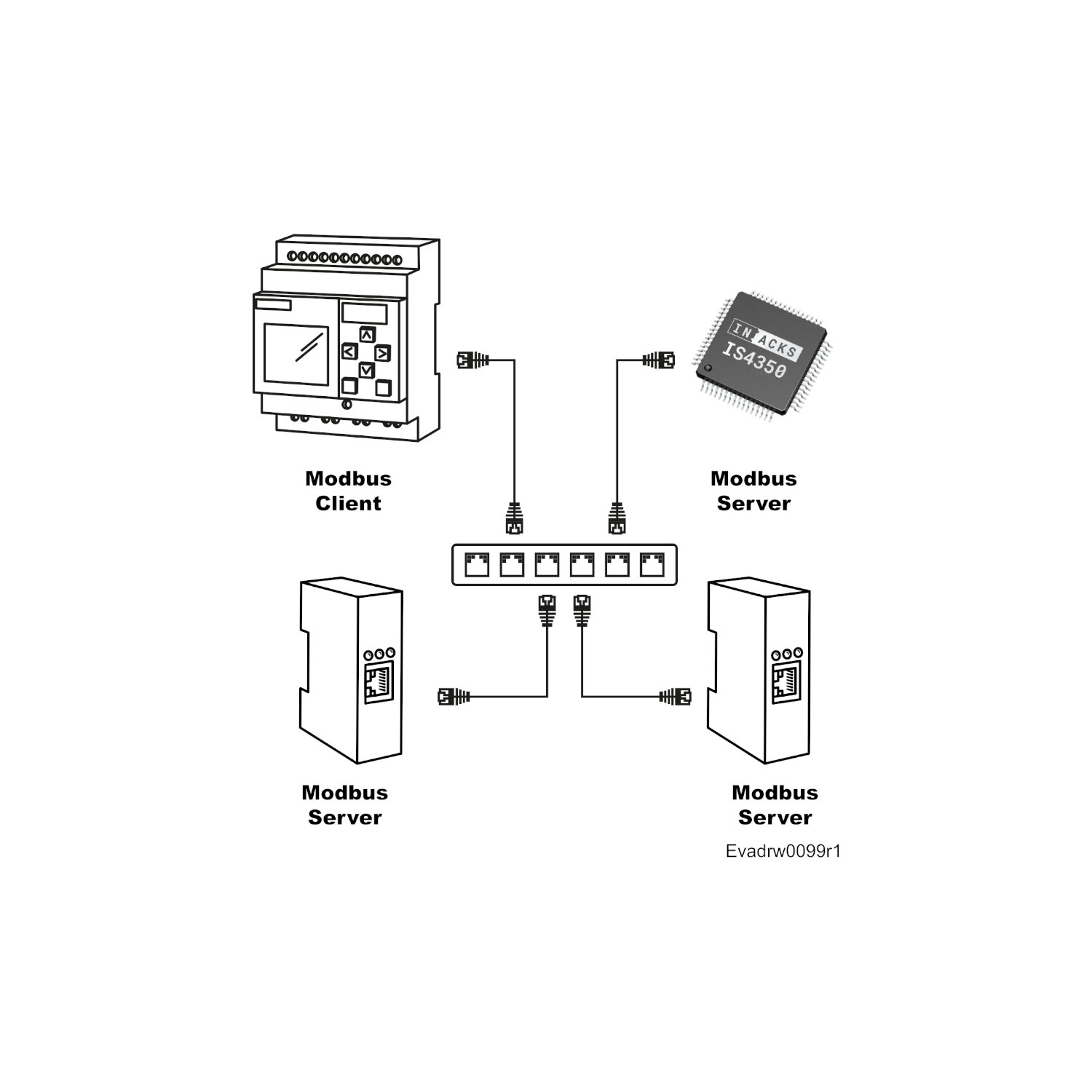

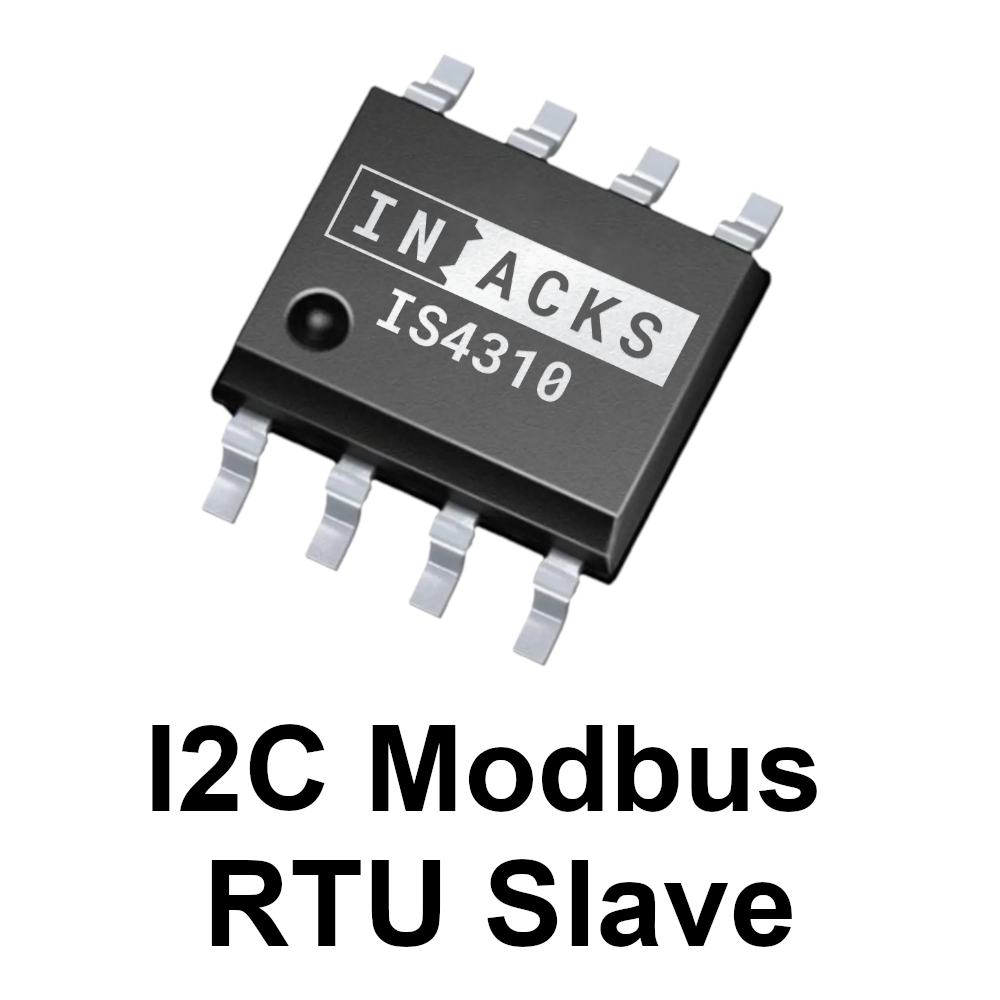
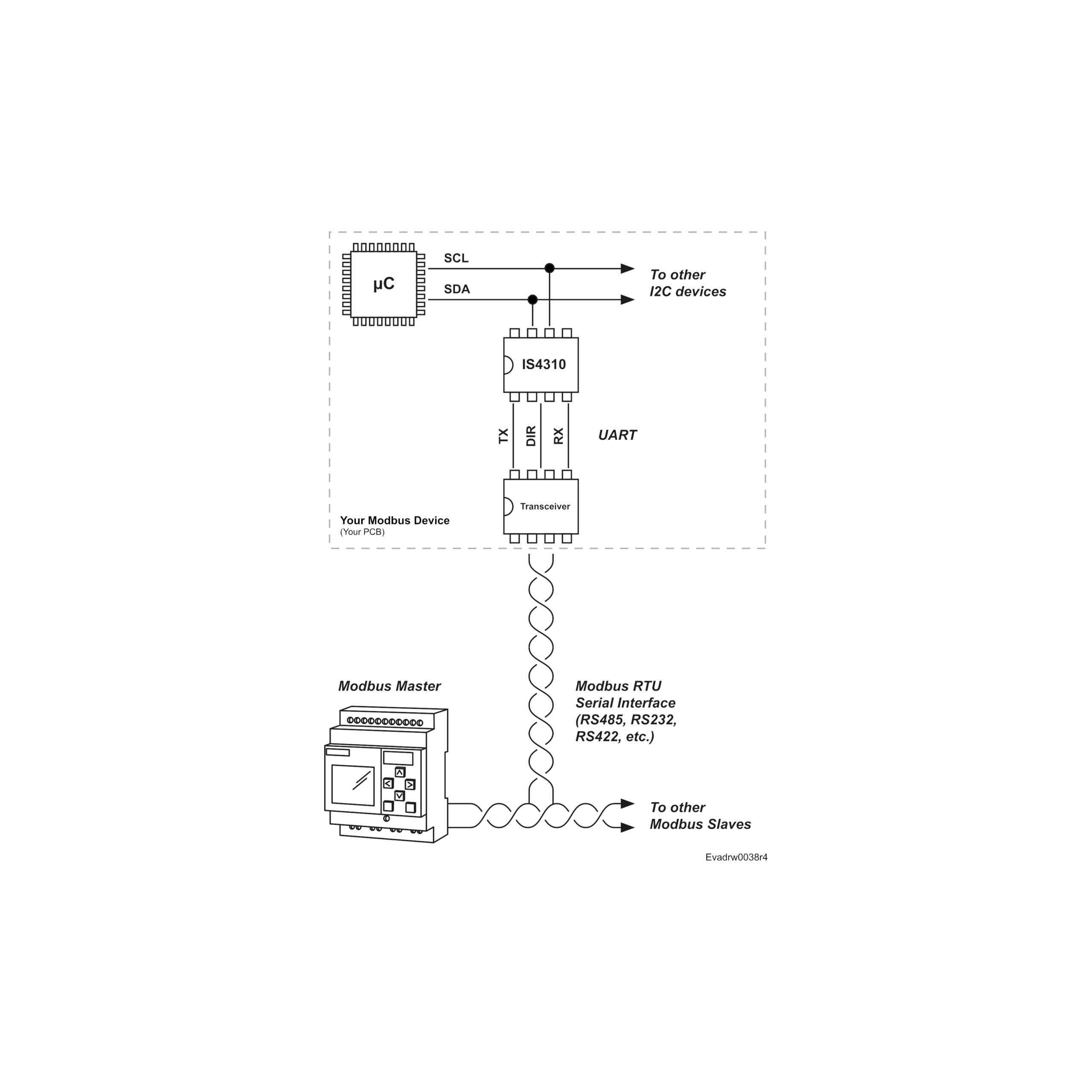
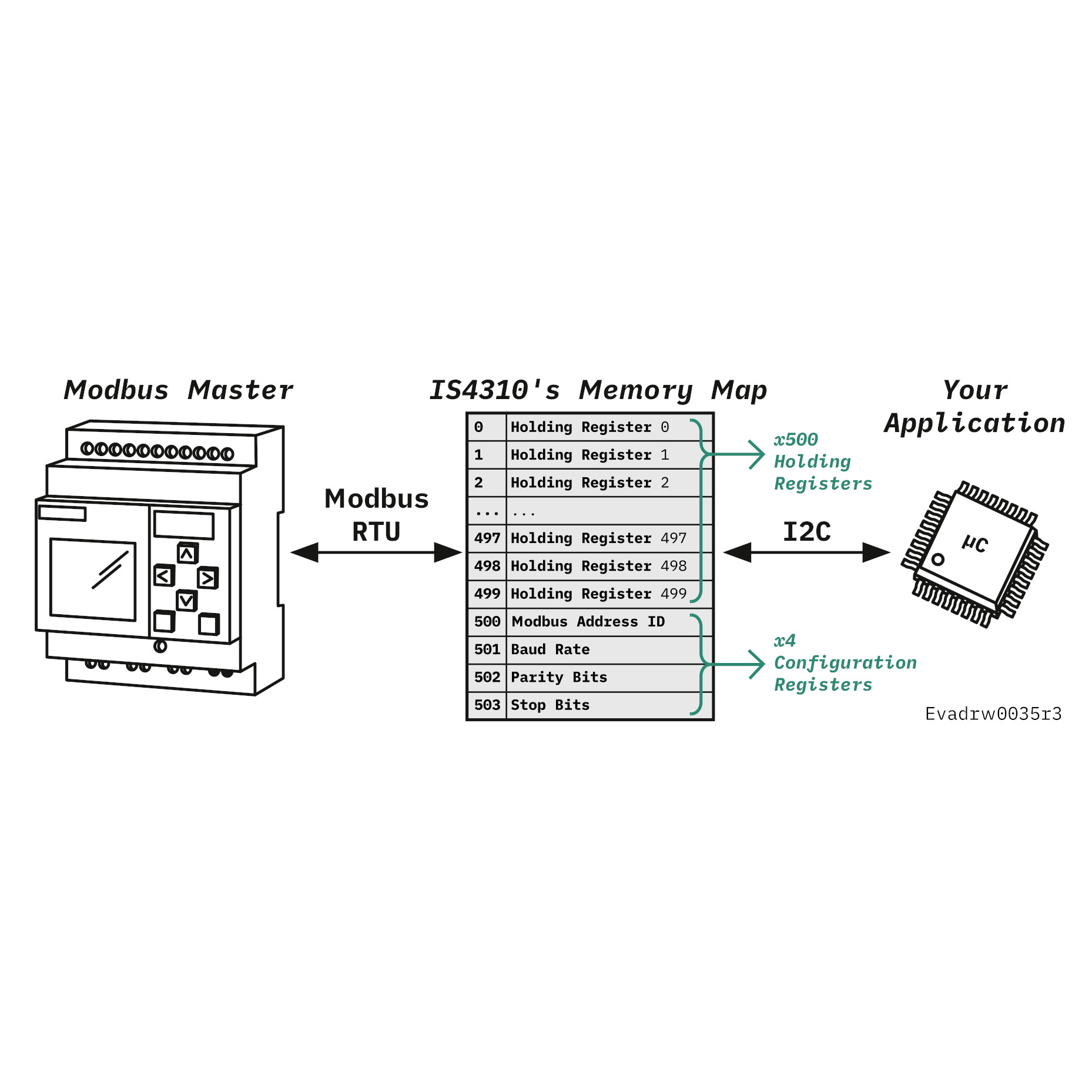
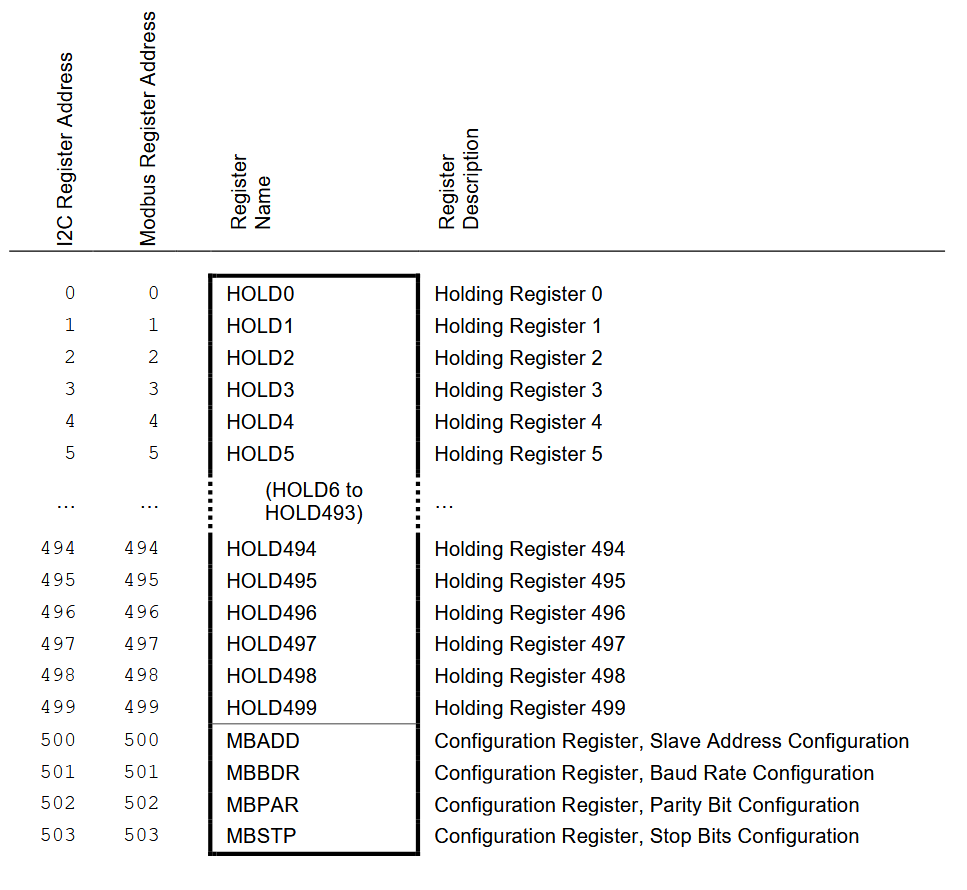
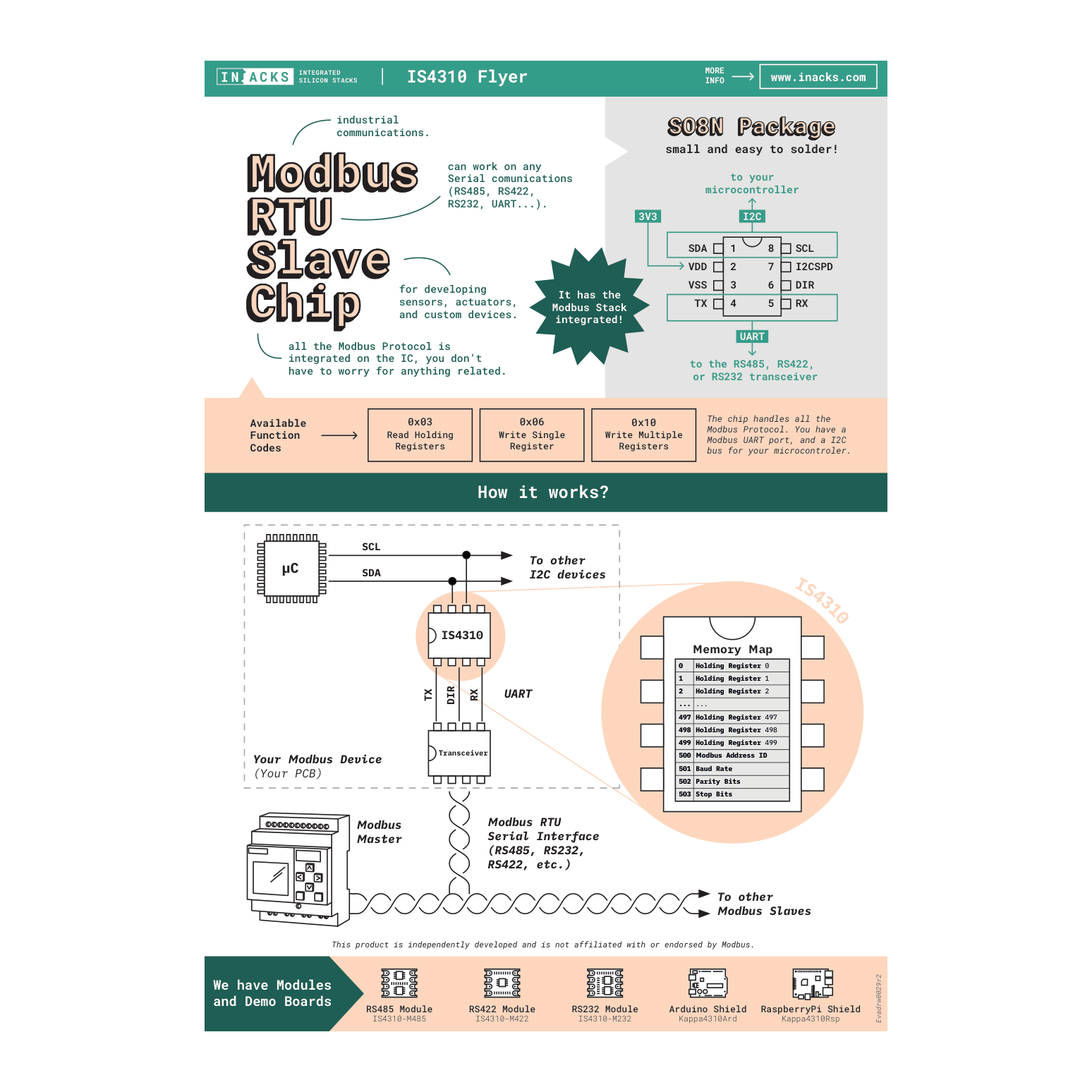
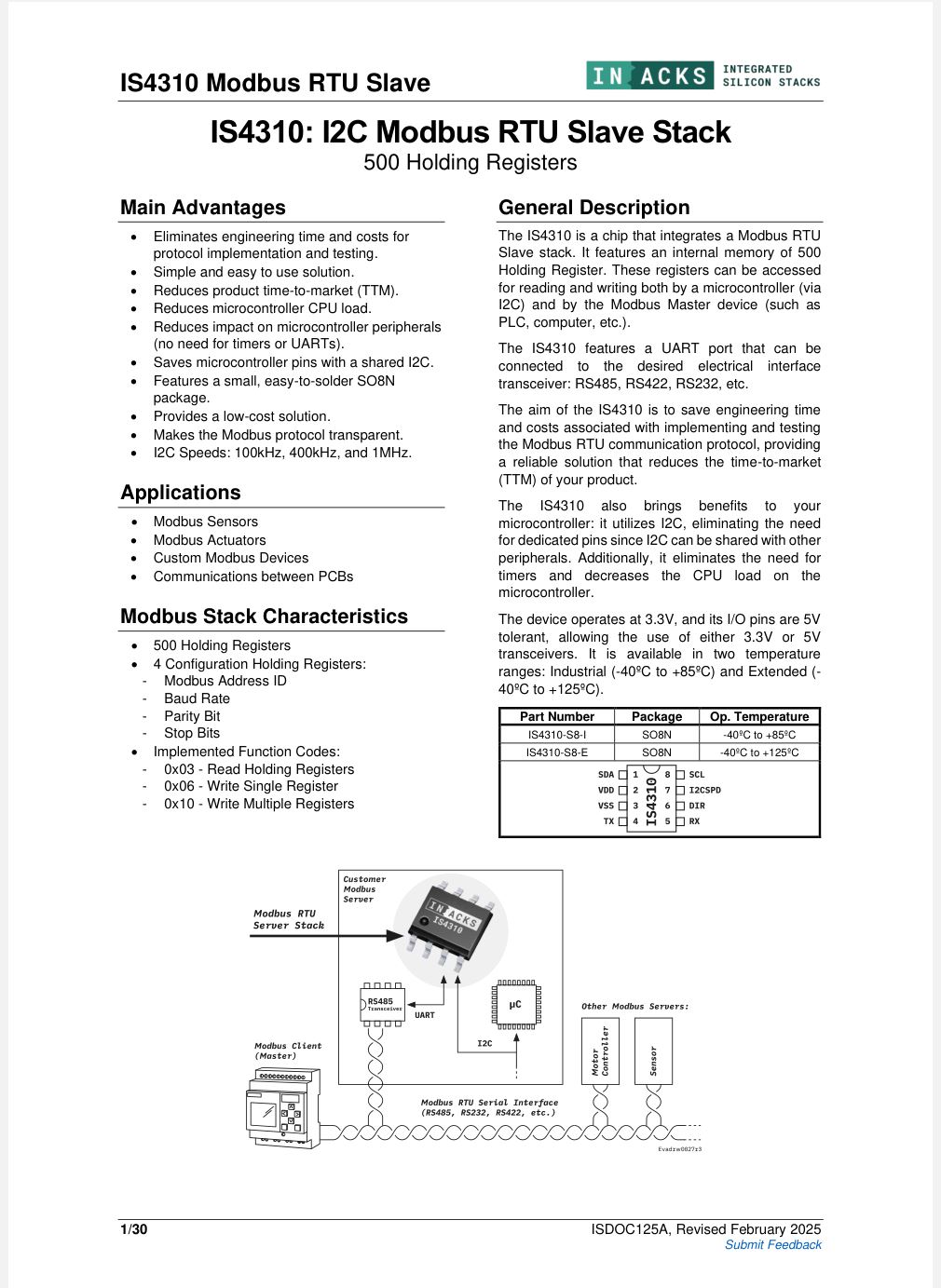
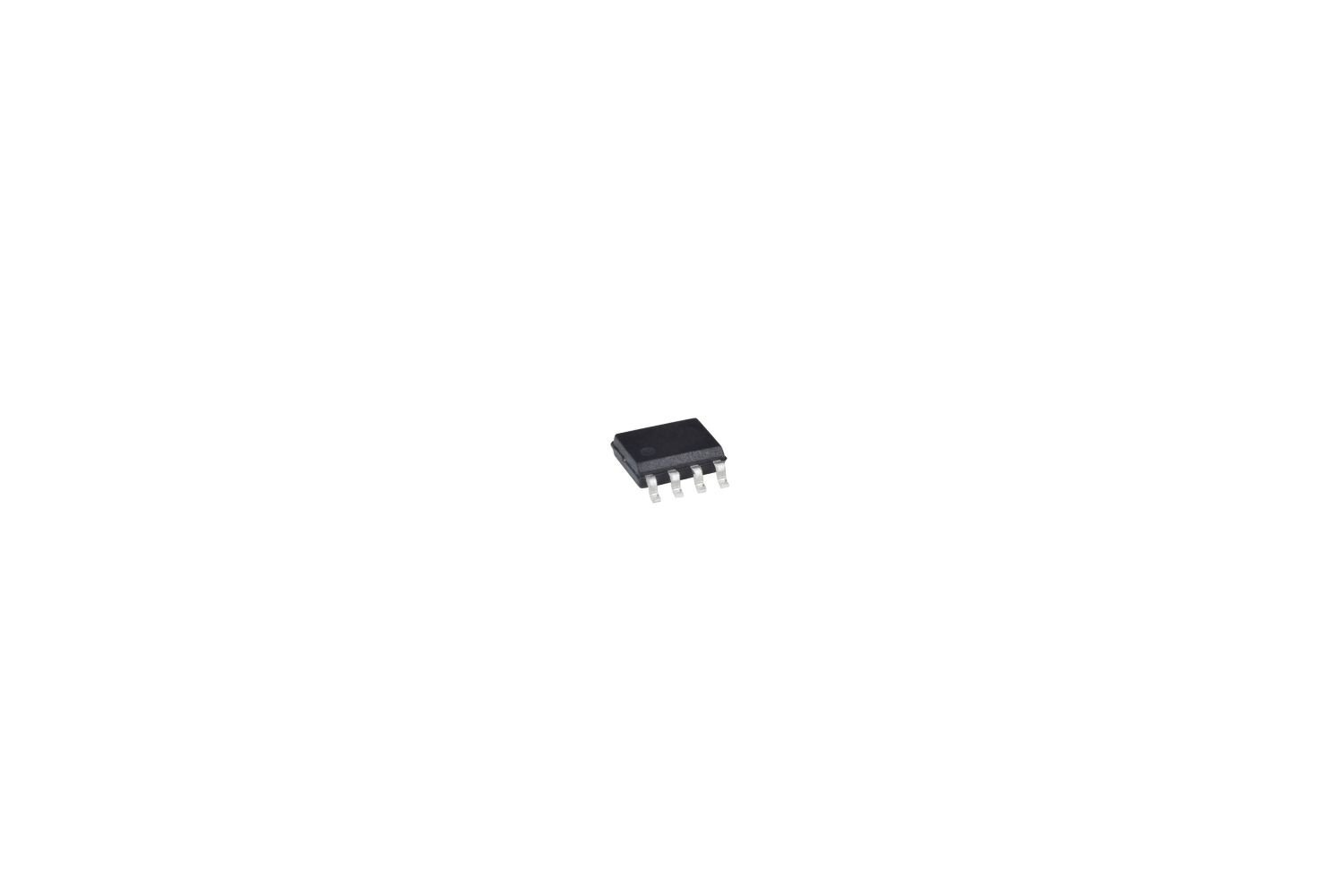
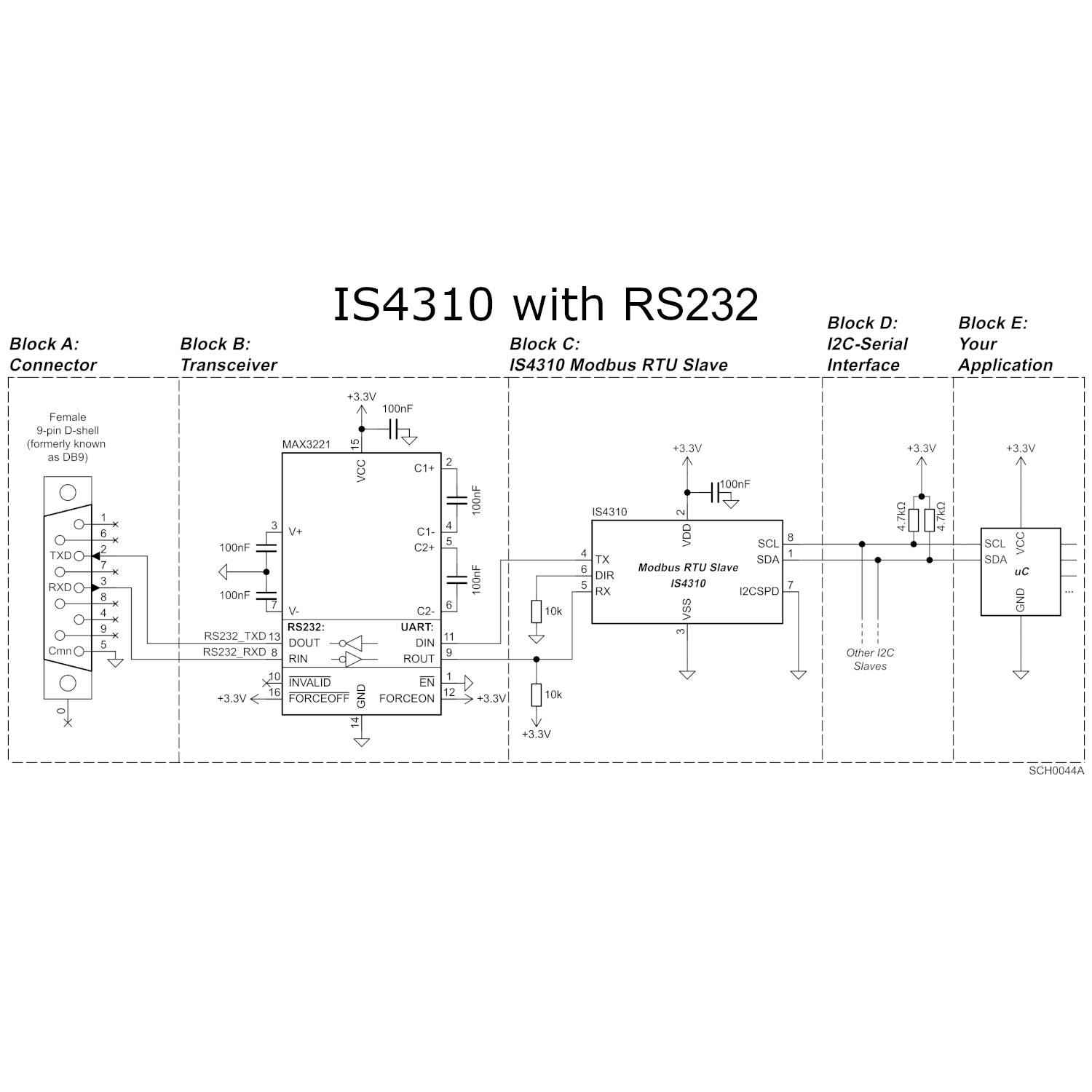
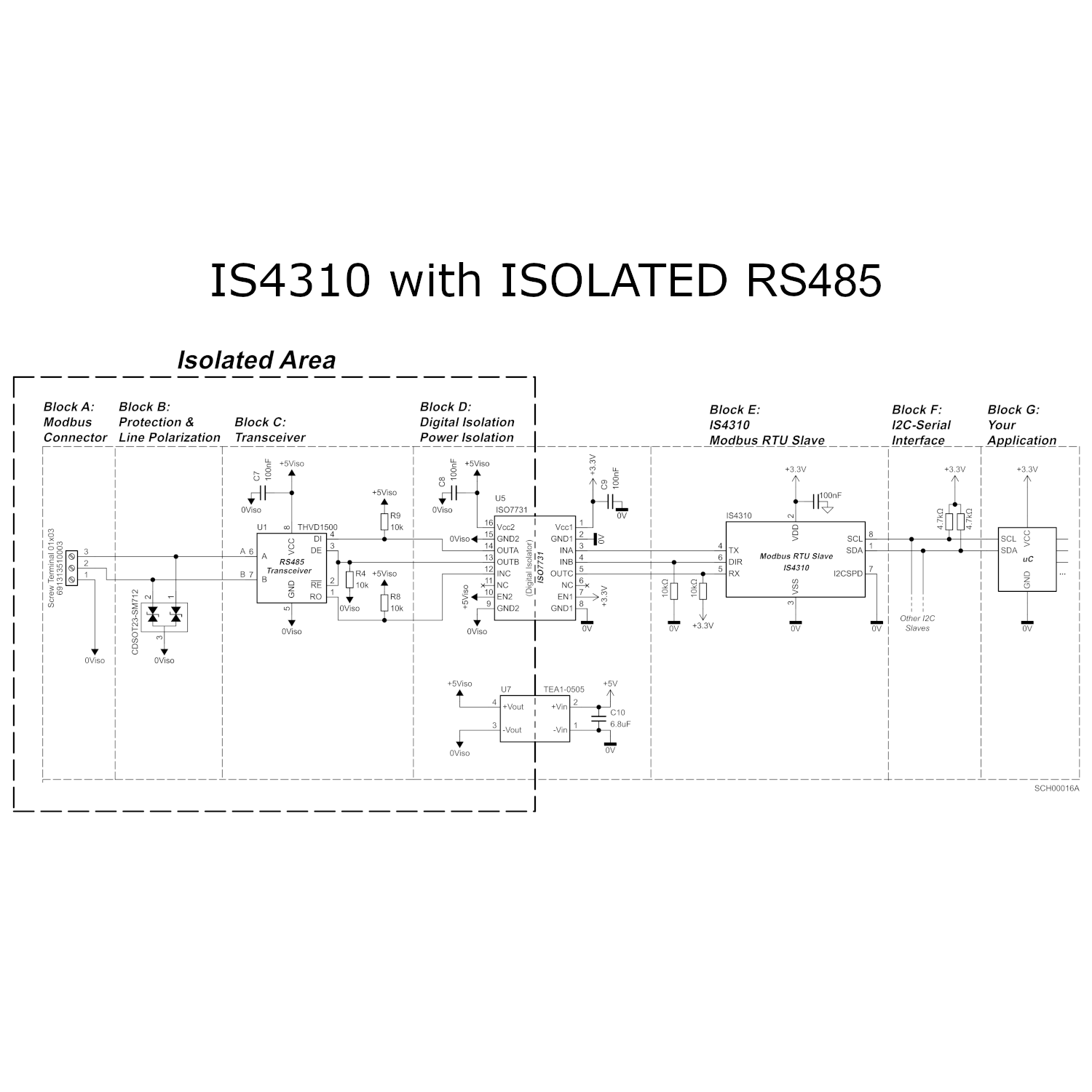
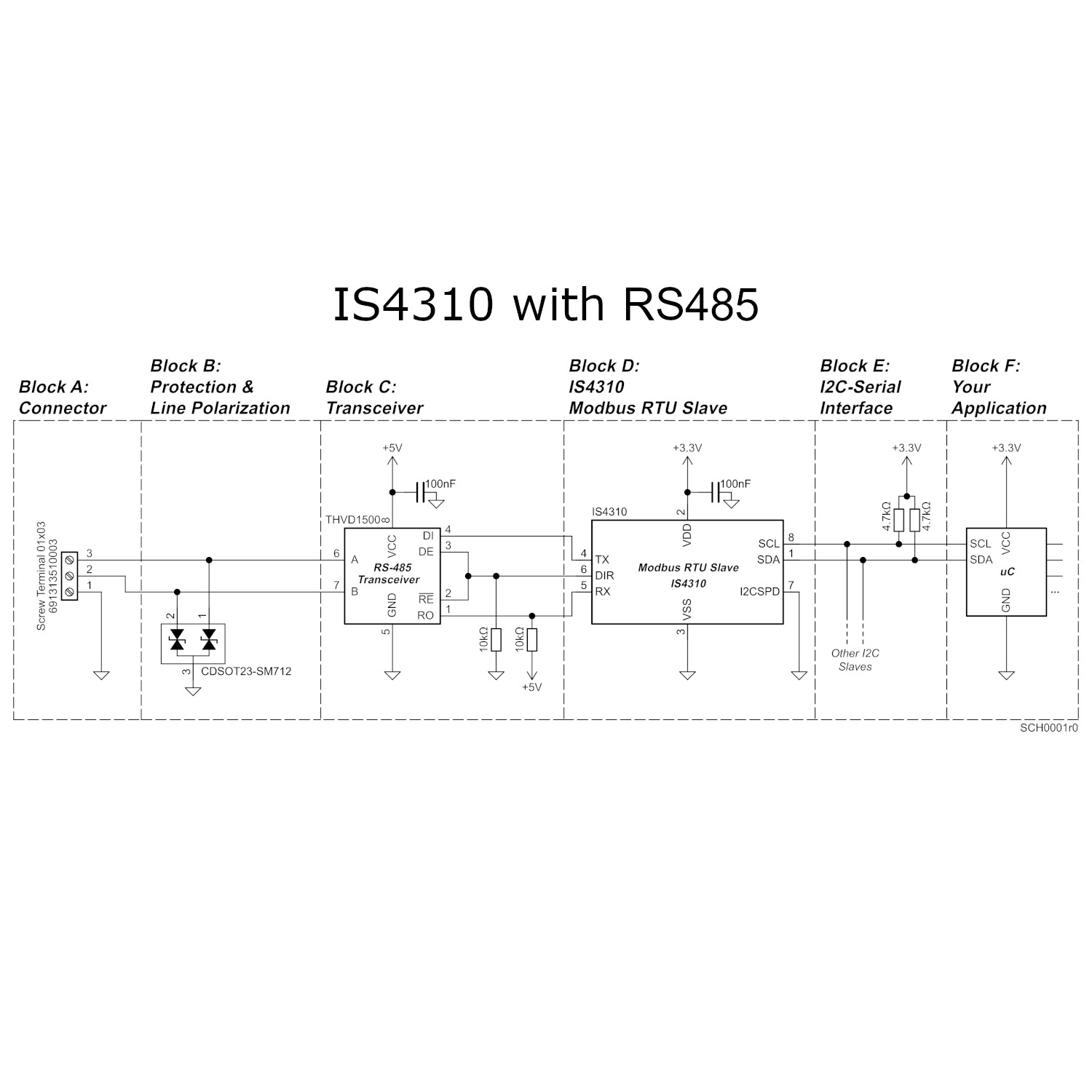
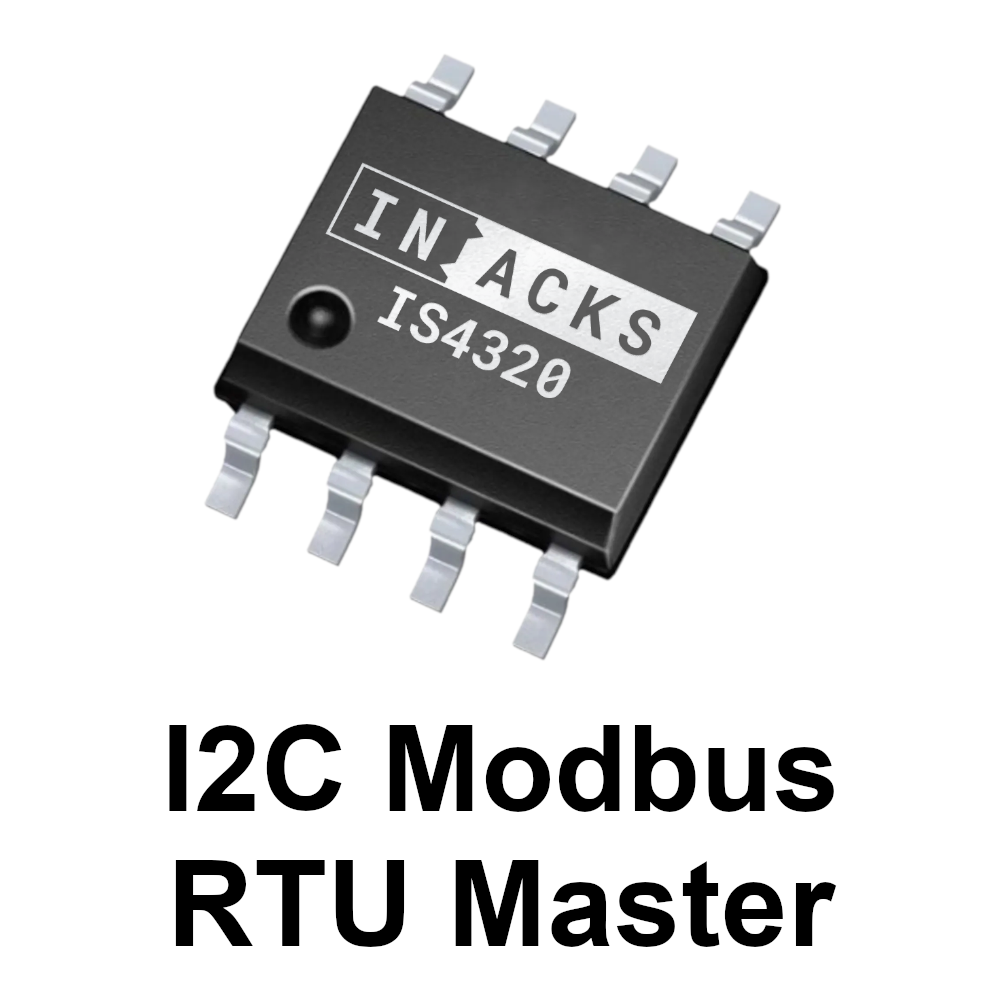
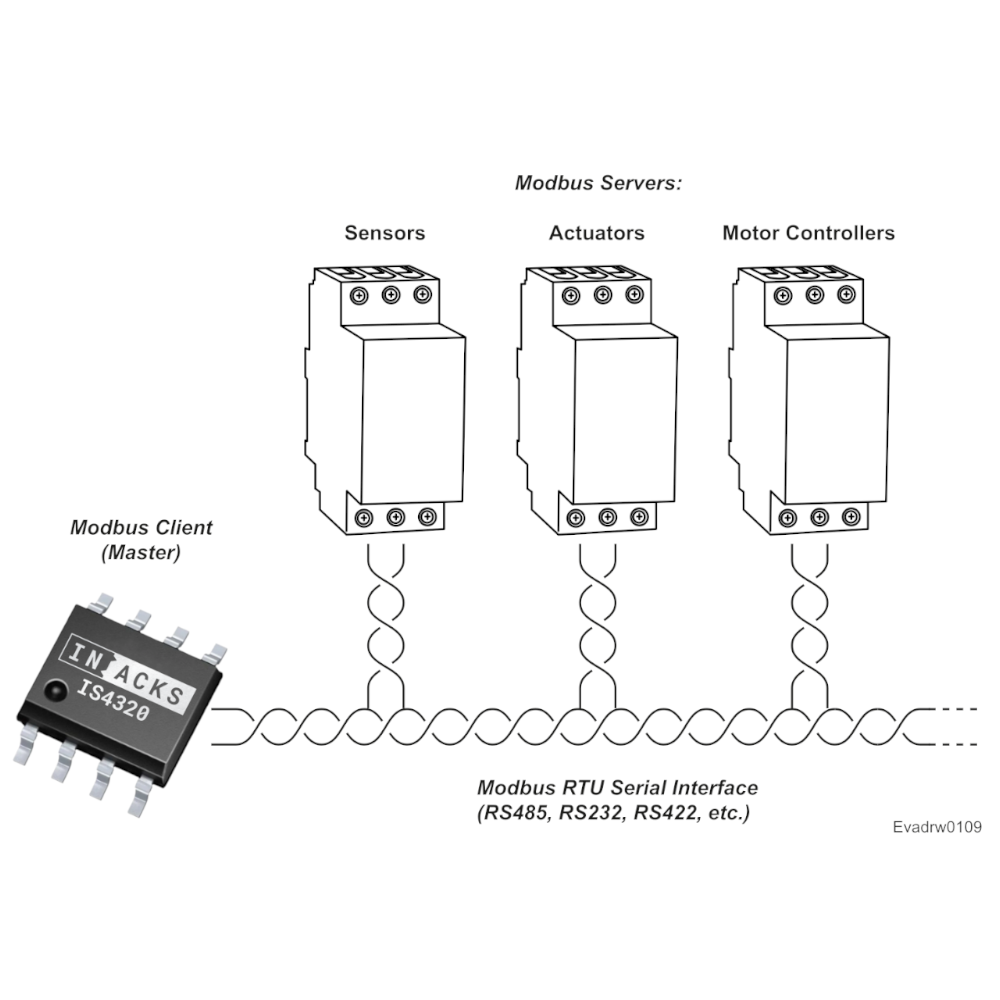
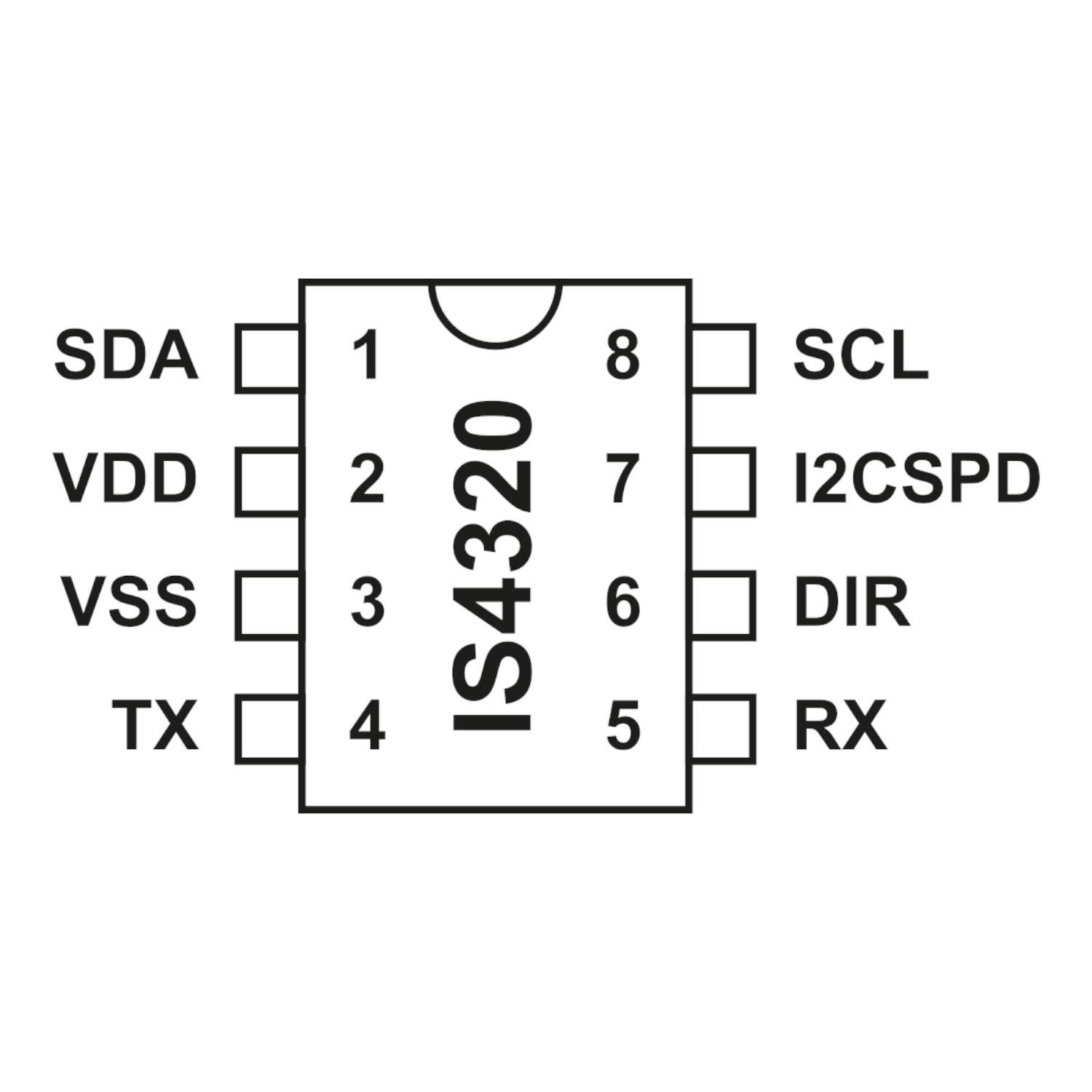
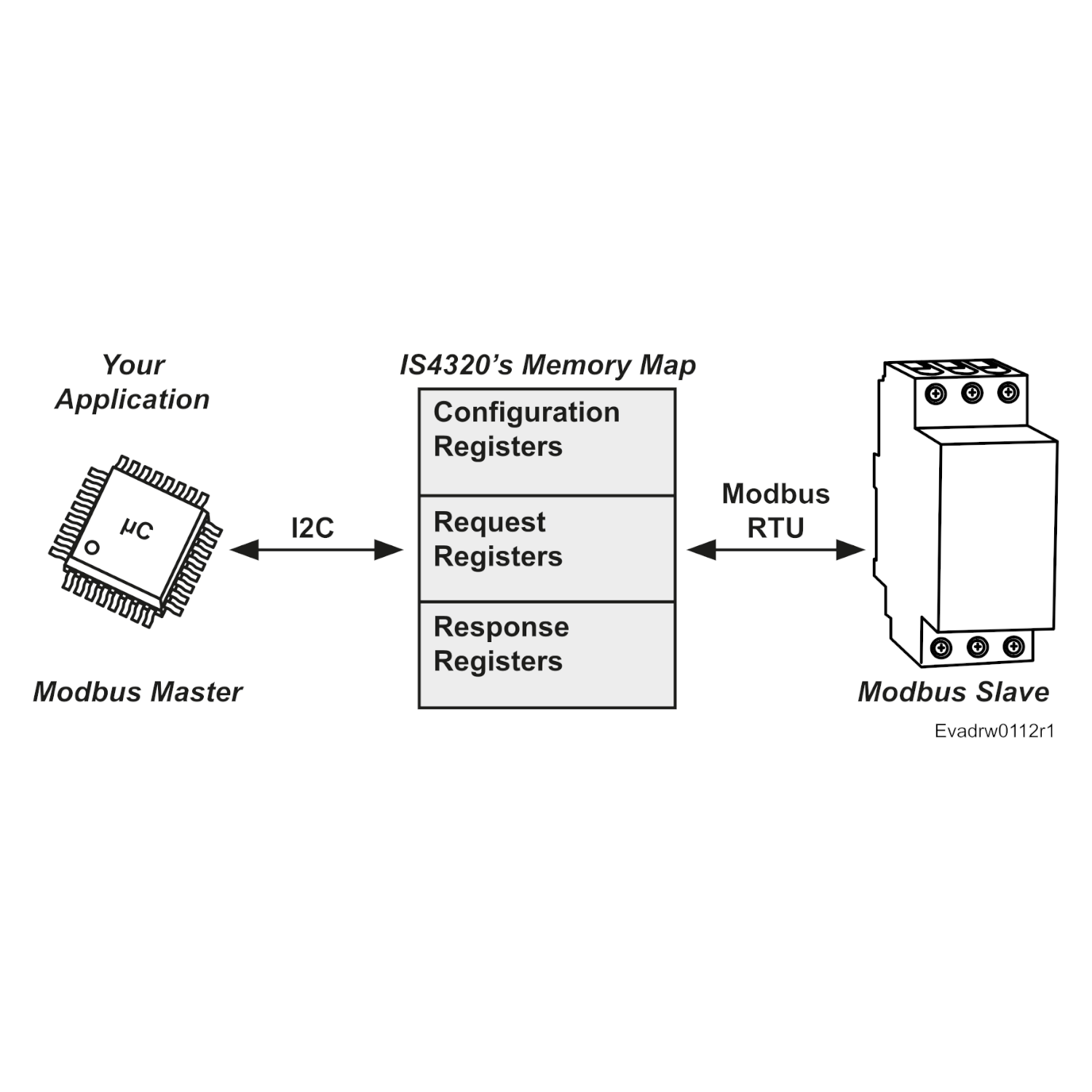

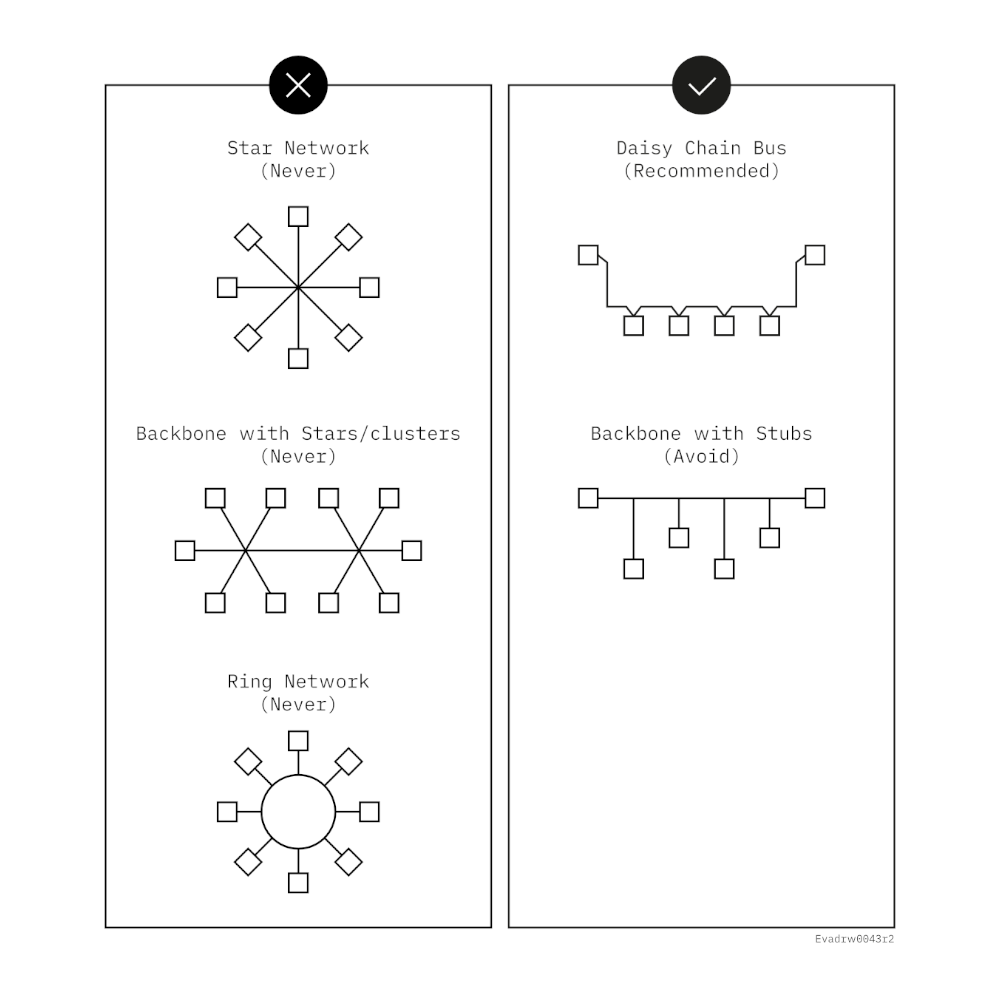
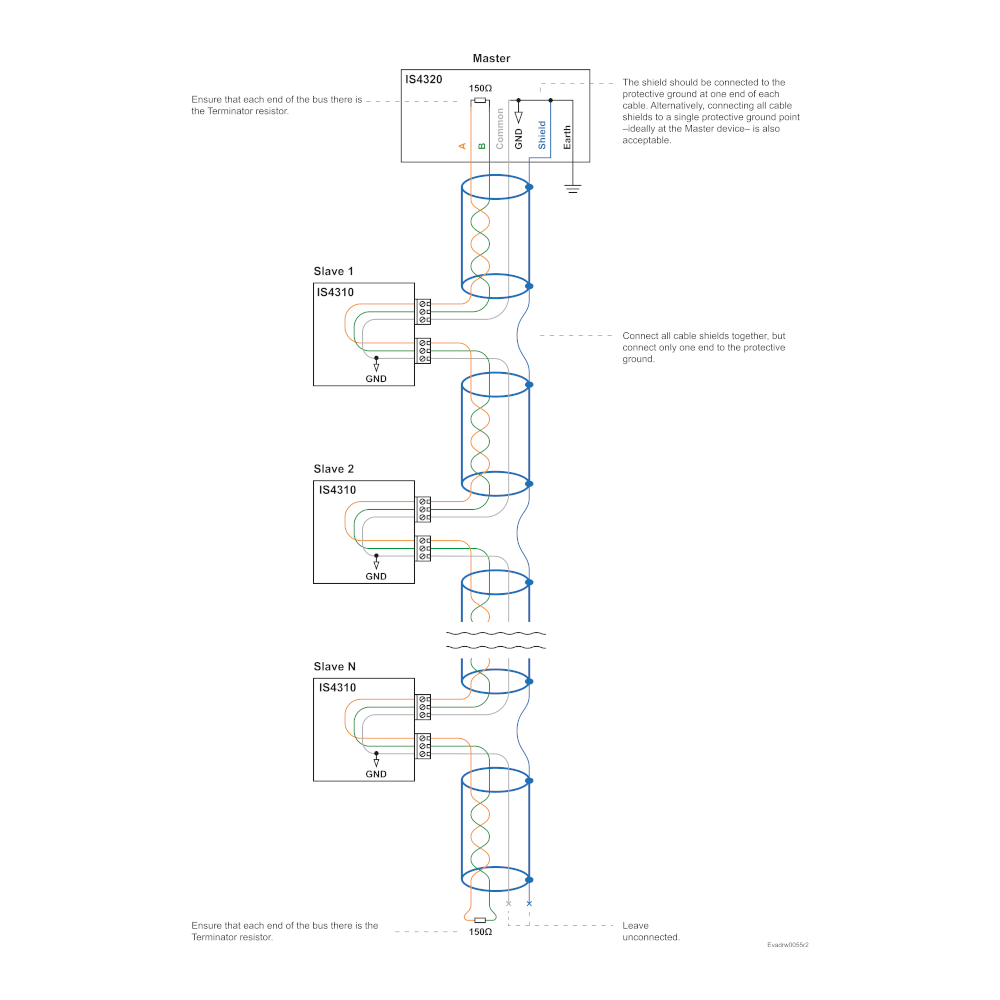
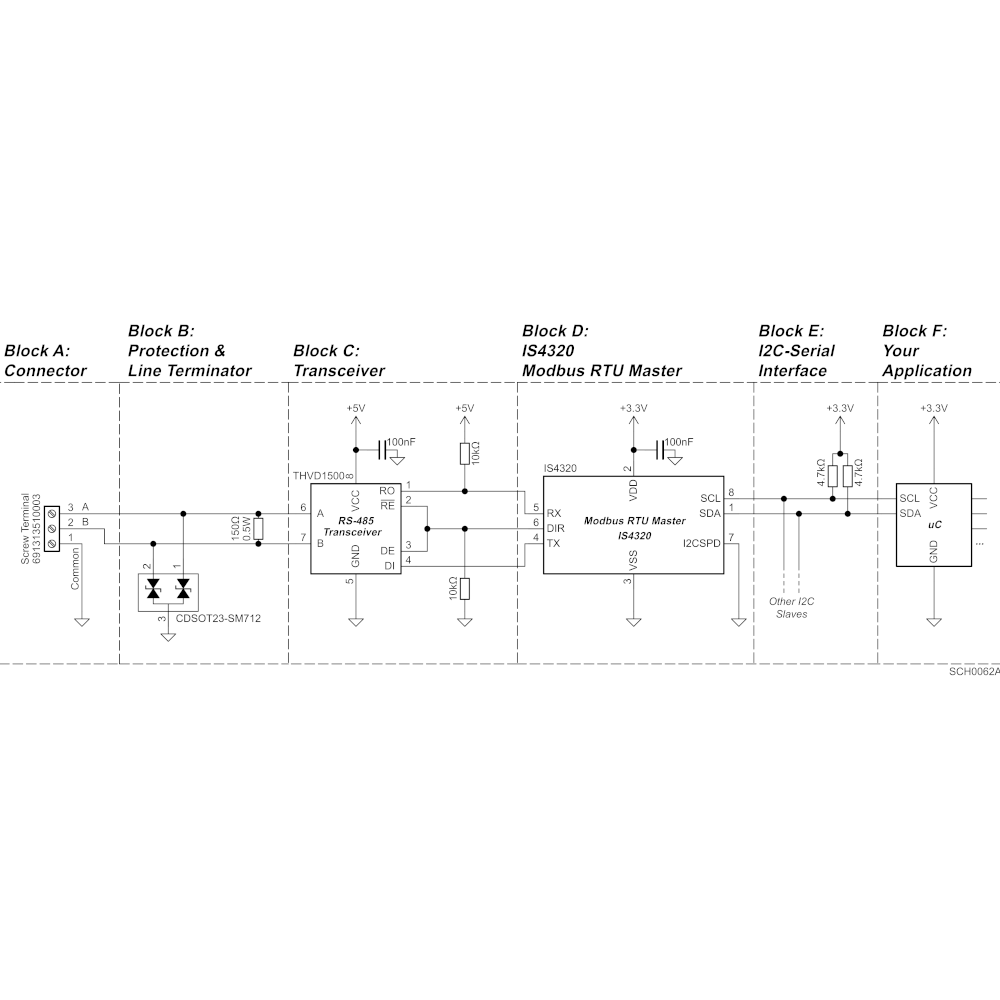

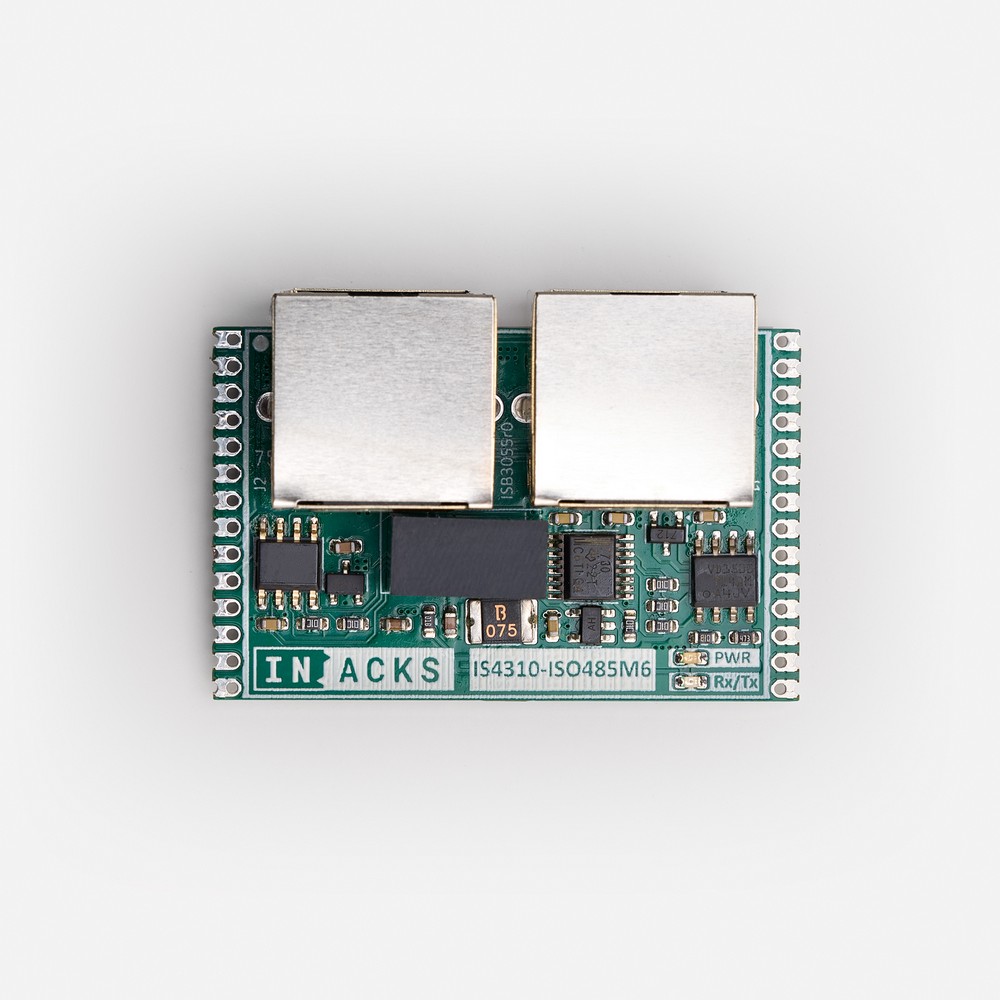

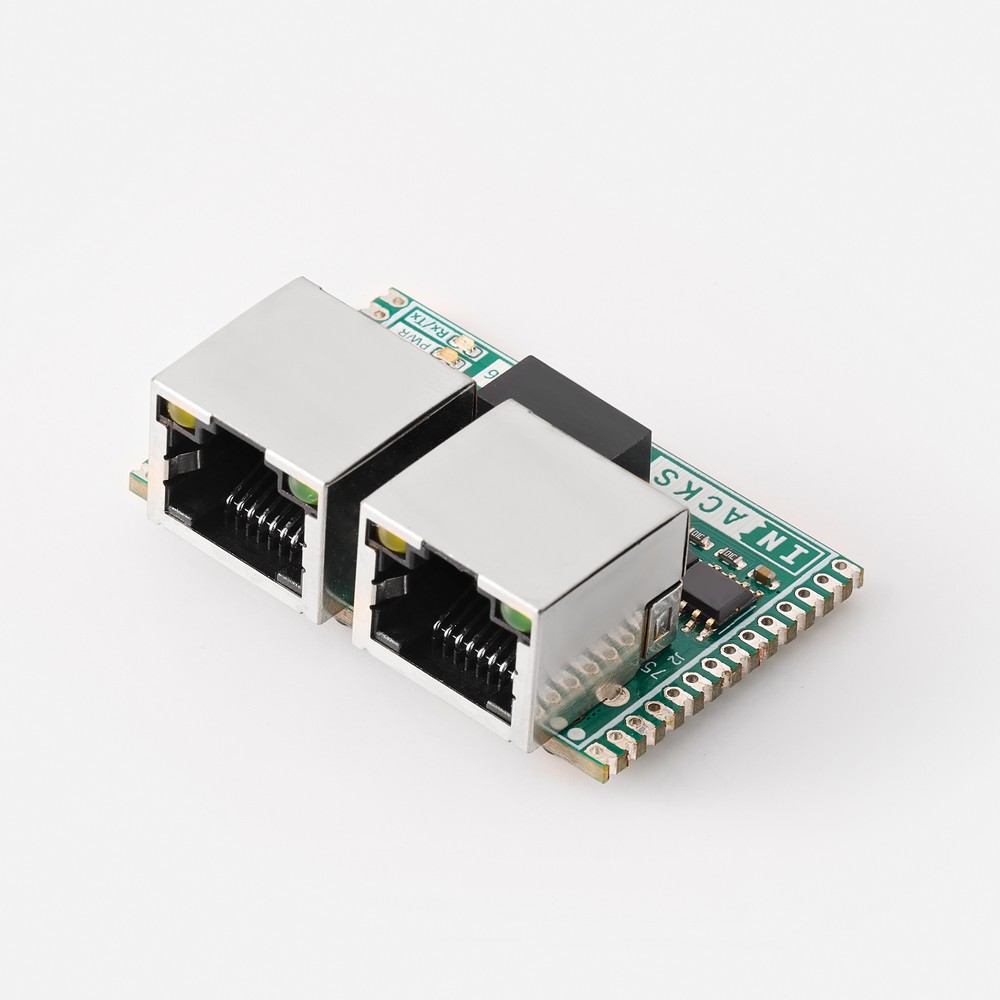

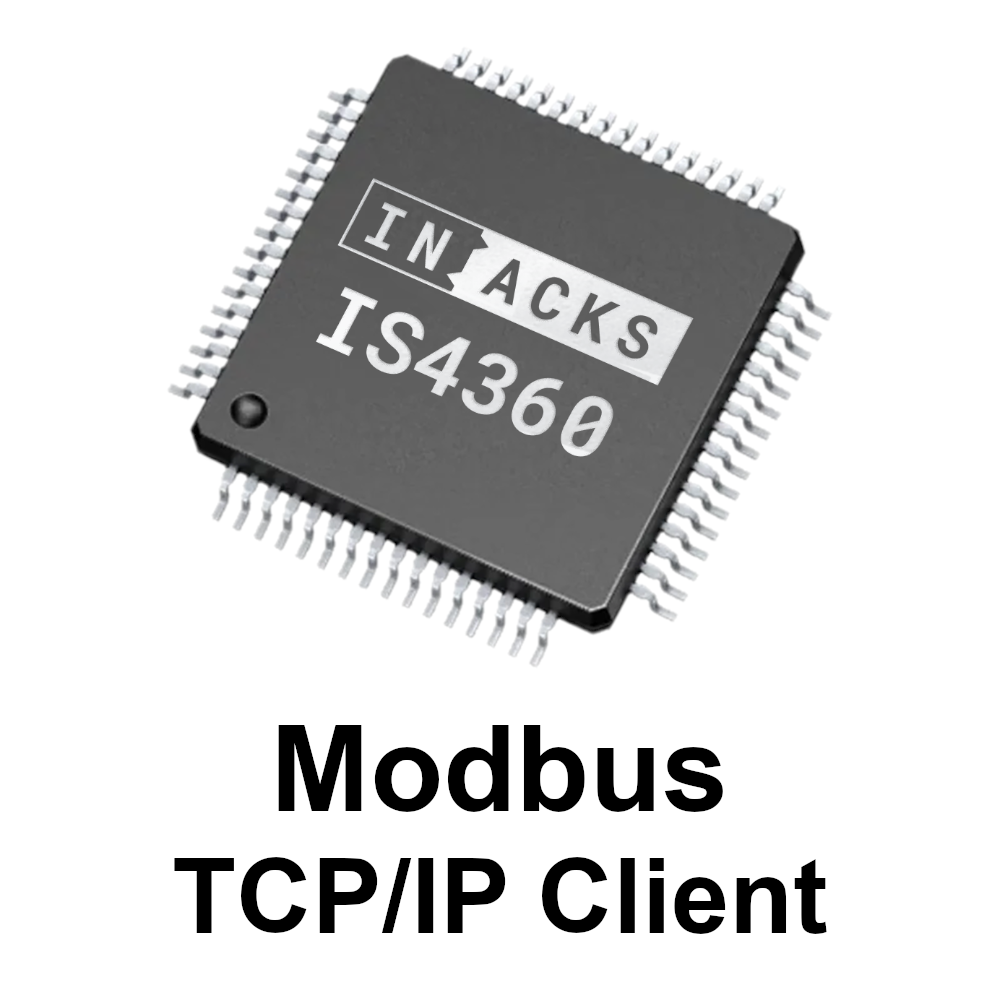
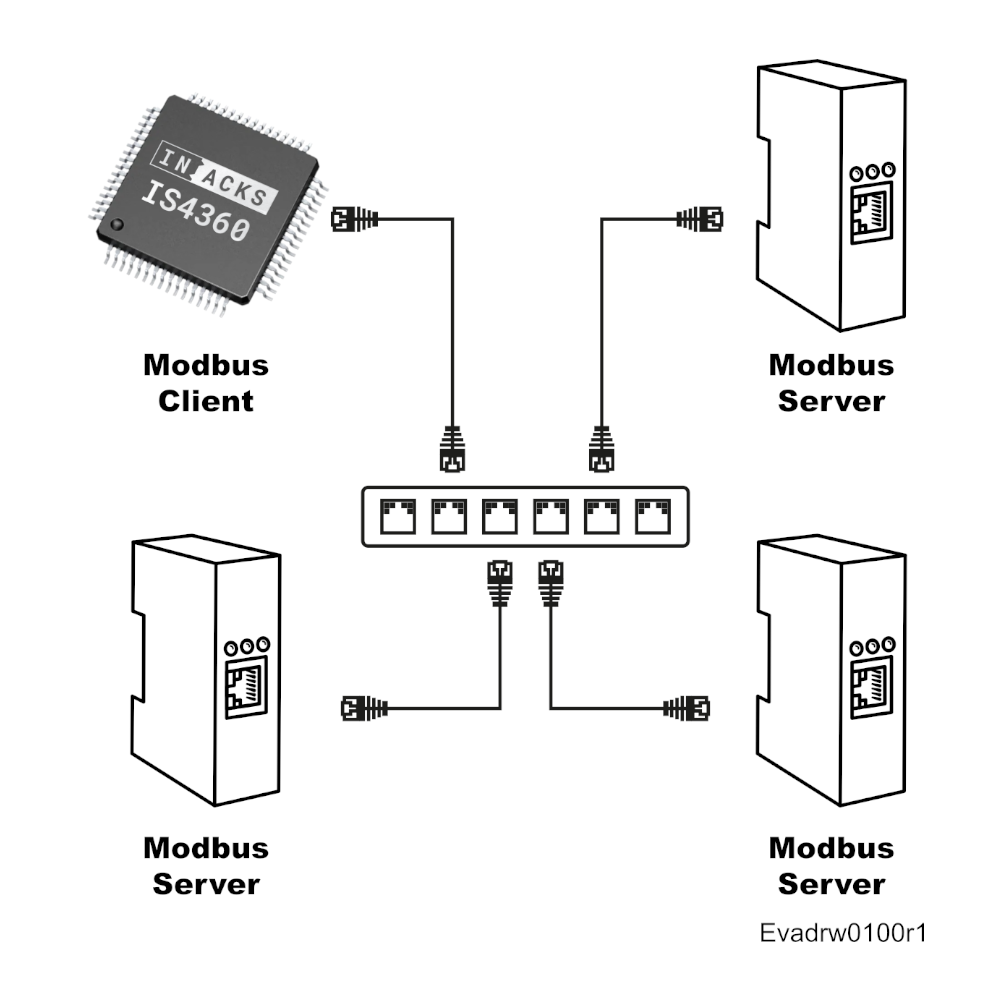
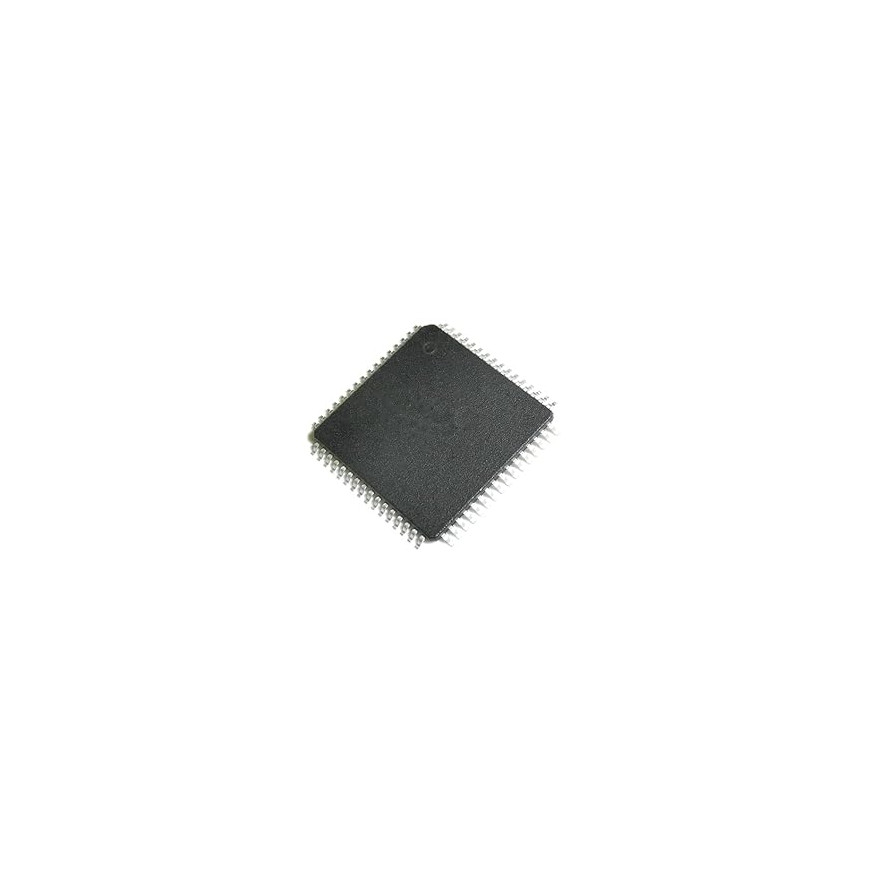
Reviews
There are no reviews yet.